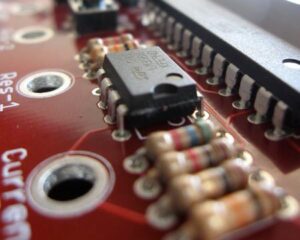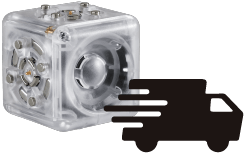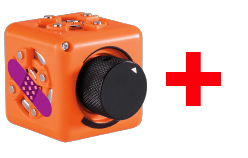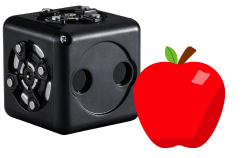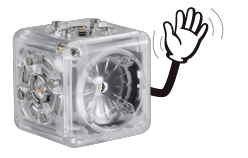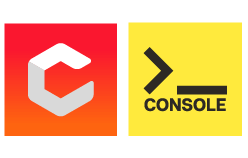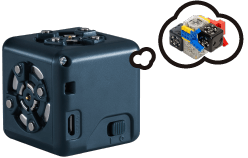Classroom management is well-served by practiced routines. I’ve already written down some of my best tips in an earlier #CubeletsChat post, but even more questions about supporting well-managed Cubelets classrooms have poured in.
We could spend an entire college course talking about student routines. They improve classroom management, increase student respect for peers and classroom materials, and there’s the importance of students practicing responsibility. But you know all of that, so we’re going to cut to the chase.
When you are deciding which routines make sense for your Cubelets classroom, remember the greatest asset we have in our classrooms is our students. Students can accomplish an astonishing amount of work in very little time (partially because there’s just so many of them!). With a short conversation, a lot of practice, and regular reinforcement, students of all ages can responsibly gather materials, report questions or problems to you, and return materials to their proper home.
To establish routines, keep three steps in mind:
- Know what routines need to be established. These can be created by the teacher or the students, but routines should be intentional.
- Plan time to practice new routines. When it comes to practicing routines, accept nothing less than perfect and make sure students can get it right more than once in a row!
- Be ready to reinforce routines. You know it, I know it, we all know there are bad-routine days: field trips, upcoming school breaks, full moons. Routines that are clearly defined are easier to practice.
Cubelets are a classroom tool that often shake up normal routines, so it is helpful to take a few minutes to reflect on your classroom routines before you introduce students to Cubelets. If you’d like to dig even deeper into choosing routines for your Cubelets classroom, I’ve built out this handy Classroom Routines guide. It organizes the routines chronologically from gathering materials to putting materials away neatly. Each transition includes a spectrum of possible routines ranging from Teacher-Led to Student-Led.
These, of course, are intended to inspire you. Consider connecting your Cubelets routines to routines you use in other content areas, or spice them up with vocabulary-specific strategies like this teacher who uses a Word of the Day transition style.
How will your students get their materials?
The only day that I don’t recommend students gather their own materials is the first day of using Cubelets. We’ve talked about this before. Cubelets are a highly engaging learning tool. The first time students interact with Cubelets, you’re going to lose their attention, so it’ll be more difficult than normal to pass along any additional information or directions.
I try to mitigate this effect in the Meet Your Cubelets lessons. During the first lesson, I pass out one Cubelet at a time. During the second lesson, I pass out exactly the number of Cubelets will need. In the third lesson, I provide students with more choices to investigate and explore, by strategically introducing new Cubelets.
How will your students troubleshoot and report problems during class?
Structures like this may already exist in your room. If so, use those! I intentionally did not build in student protocols for handling Cubelets because every classroom is so unique to both the teacher and its students. For instance, some classrooms may be used to reporting problems with materials directly to the teacher, while others may be used to having a specific student or two who is in charge of troubleshooting alongside their peers.
Regardless of what fits best in your classroom, I strongly recommend taking time when first starting with Cubelets to introduce your expectations for how to handle confusing robots or blocks that don’t appear to be working correctly. Here’s a Troubleshooting Poster if you’re working with Cubelets in their default state. When you’re ready to begin using the Cubelets App or Cubelets Blockly to code your Cubelets, it might be handy to have this page ready for students.
How will your students return their materials?
I’ve written about storing Cubelets in past #CubeletsChat posts so I won’t reiterate the storage ideas again here, but how can you enlist your students to help manage the Cubelets?
It might be helpful to assign one or two students to check that all Battery Cubelets are plugged in and charging at the end of class. It also might be helpful to assign one or two students to tend to any Cubelets that were tagged as “not-working” during class. Sometimes Cubelets are just finicky (and therefore don’t need to be pulled from your set or turned in for warranty), sometimes Cubelets have trouble with just one side so it’s a matter of labeling that side with a small sticker or drawing on it with Sharpie, and sometimes Cubelets really do need to be troubleshooted with the help of our Customer Support team. (It’s easy, just email support@modrobotics.com and we’ll connect with you within 48 hours!)
It also might be helpful to assign one or two students to check that all Cubelets have been returned to their correct places. This might mean counting all the Cubelets with pink dots and green dots and blue dots to make sure each color is a complete learning group set, or it might mean checking inside the Ed. Tubs that every Cubelet has been returned to its proper home.
While you, as the teacher, are ultimately responsible for maintaining your Cubelets in your classroom, there are many innovative ways to enlist the support from your students. Not only do clear student routines build student responsibility and ownership of the classroom, but student routines can also support you, so you can spend less time with the nuts’n’bolts of managing Cubelets and more time teaching rich lessons.
Additional Resources:
- Teaching Channel: Choreographing the Classroom
- Word of the Day/Grab Bag Quiz Transition Cues
- NEA: Set Up Rules & Routines
Enjoyed this blog post? Sign up for the #CubeletsChat newsletter to receive the next blog post straight to your inbox. Plus join the discussion on twitter using the #CubeletsChat hashtag!
